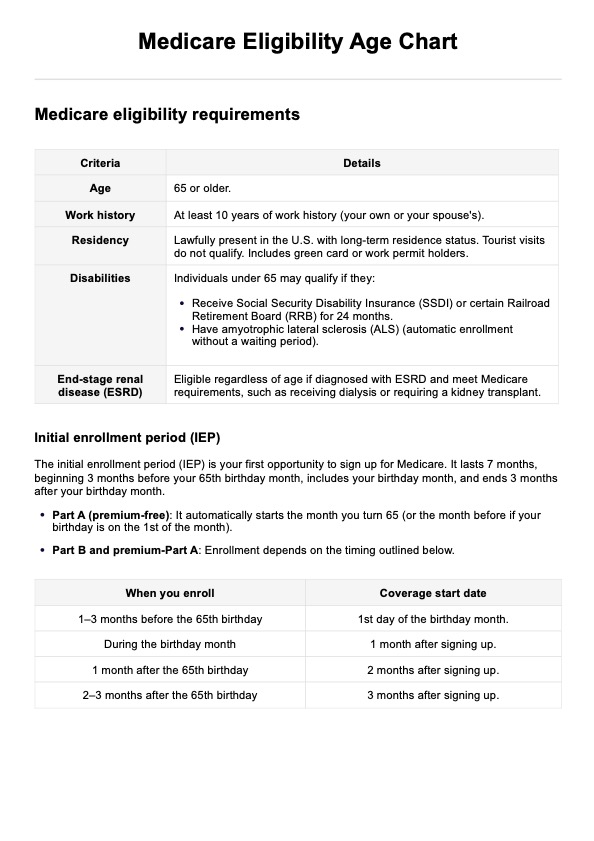Medicare is available to individuals aged 65 or older who have paid Medicare taxes for at least 10 years, people of any age receiving disability benefits for 24 months, and those with end-stage renal disease or amyotrophic lateral sclerosis (ALS). Applicants must reside in the U.S. lawfully and meet tax requirements.

Medicare Eligibility Age Chart
Unlock key insights into Medicare eligibility with our detailed age chart and comprehensive guides, perfect for healthcare professionals and the public.
Use Template
Medicare Eligibility Age Chart Template
Commonly asked questions
Missing the initial enrollment period (IEP) can result in delayed coverage and penalties. You can enroll during the General Enrollment Period (January–March), with coverage starting in July and potential late penalties. A Special Enrollment Period may apply if you have employer health coverage.
EHR and practice management software
Get started for free
*No credit card required
Free
$0/usd
Unlimited clients
Telehealth
1GB of storage
Client portal text
Automated billing and online payments











